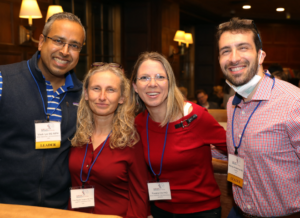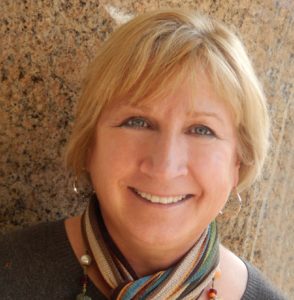CHRN: Creating a Roadmap for the Future

 A Message from Marianne Clancy, Cure HHT Executive Director
A Message from Marianne Clancy, Cure HHT Executive Director
Transformational. That’s the word that keeps coming to mind since returning from Boston, the site of the 1st Cure HHT Research Network (CHRN) International Convening. I have been part of this foundation for nearly 30 years, and I can honestly say that this stands out as the most transformational event I have ever attended. There’s that word again – transformational.
We will have much more to share about CHRN in the coming weeks and months, but I felt compelled to send a quick note following the event. True momentum has been created. There is real reason to be optimistic for what’s to come for the future of HHT treatment and research because of this patient-driven network. With patient voices at the center of it all, the most brilliant HHT clinicians, researchers and scientists are working together to create meaningful progress in the areas patients have told us matters most to them. It is the type of collaboration that we could have only dreamt about just a few years ago. And it has the power to lead to the type of impact this community so urgently deserves.
But before going too far, I must share a few thank you’s:
- To the Chan Zuckerberg Initiative: None of this would be possible without your support, as this network is born out of their Rare As One grant and mission to accelerate research for rare disease through the creation of patient-led research communities.
- To our clinicians, scientists, and researchers: Hope exists because of you… because of your brilliance, your hard work, and your selfless dedication in the fight for better patient outcomes.
- To our patients: You are the driving force for change, and the center of everything CHRN is doing. Your participation in the survey prior to the event and continued advocacy helps ensure we are focused on what matters most to you.
So much work took place before we ever arrived in Boston. Earlier in the year, we surveyed over 1,200 patients and nearly 150 scientists and clinicians to better understand what matters most to our patients and glean insights on the biggest gaps in HHT research. From that data, eight topic areas were identified – bleeding, antiangiogenics and non-BMP pathways, BMP pathways, AVM progression, unresolved topics in lung AVMs, unresolved issues in brain AVMs, somatic mutations & genetic mechanisms, and genetic considerations in HHT diagnosis. Teams were formed under each topic area, comprised of patient advocates and leading researchers, clinicians, and scientists. Those teams then participated in hours of working sessions to formulate recommendations within their respective topic areas.
It was truly astonishing looking out at the crowd as the event kicked off. Gathered in the same room were 75 of the world’s leading HHT experts, all united and working together to develop a prioritized research roadmap for the next 3-5 years to deliver the most impact to our patients.
On Saturday, each workstream group presented their recommendations. At the end, the full group voted to prioritize each recommendation based on two criteria points: Patient impact and feasibility. On Sunday, with priority areas ranked and identified, work began to build the roadmap. The ideas shared, the debates had, the recommendations put forth were… well, transformational. There really isn’t a better word. This collaboration between cross-disciplinary experts will have a profound impact on bringing forward better treatments faster.
CHRN provides clarity. No longer are we asking the question: What do we need to be doing? With the roadmap in hand, the question becomes: What do we need to get this done? The priorities have been identified, recommendations are in place to address the biggest research gaps, and strategies are being formulated to bring it all to life. The mission ahead is clear.
As my colleague and Cure HHT board member Jim Lapides said in closing out the conference: “You can’t get there if you don’t know where you’re going, and this roadmap is going to help us get there and get there fast.”
We will be putting the final touches on that roadmap in the coming weeks, and are eager to share it with you all soon. While much work remains in our fight to one day cure this disease, the patient-driven CHRN provides reason for hope.
